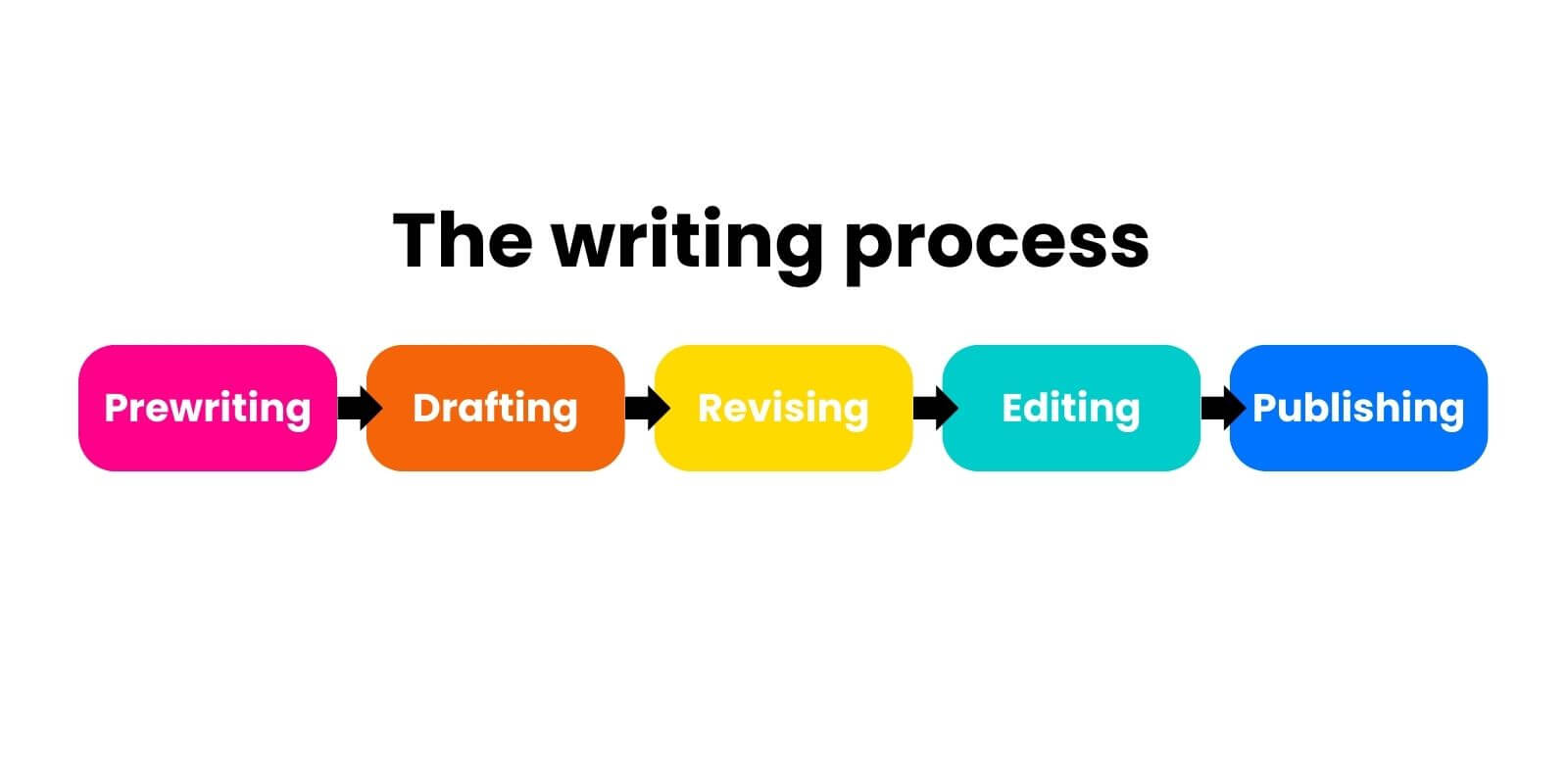Introduction
Why Editing Is The Most Important Part Of Writing It’s common to refer to writing a narrative, essay, novel, or even an article as a process of discovery. creating enables concepts to develop, characters to grow, and arguments to be organized, whether you’re creating a work of fiction, an academic paper, or a blog post.
But while writing is crucial for establishing the framework of your story or argument, editing is the real secret to turning unpolished thoughts into writing that is effective, logical, and polished. The process of editing serves as a link between an initial draft and the final product.
In the writing community, editing is frequently misinterpreted. Many writers view it as a laborious afterthought or something that can be finished in a single, fast sweep, especially those who are new to the craft. But editing is much more than rearranging sentences or correcting grammar errors.
It is a complex process that improves, polishes, and sharpens your writing so that your thoughts can be communicated as effectively, convincingly, and imaginatively as possible.
1. The Role of Editing in Writing
At its core, editing is the process of reviewing, revising, and improving a piece of writing. It involves checking for errors, reorganizing content, improving readability, and ensuring that the work flows logically and coherently. Many writers mistakenly view the writing and editing processes as two separate and distinct tasks, but in reality, they are deeply interconnected.
1.1. Editing Provides Structure and Organization
The concepts, plot points, or arguments in your first draft are frequently jumbled, haphazard, and occasionally even broken. Even though you may have jotted down whatever ideas came to mind during your brainstorming session, you aren’t yet worried about how well everything fits together. Editing becomes crucial at this point. Structuring the work—putting paragraphs, sentences, and sections in a logical arrangement that improves the piece’s flow and readability—is a significant step in the editing process.
Writing well involves more than simply what you say; it also involves how you say it. By editing, you may make your work more coherent and make sure that your thoughts flow in a way that your readers will understand.
This could entail reorganizing entire sections, eliminating superfluous material, or ensuring that every paragraph flows naturally into the one after it. Strong organization makes it easy for readers to follow along and comprehend your major arguments, whether you’re writing an academic essay or a book.
Read more
1.2. Editing Improves Clarity
A well-written piece of work is not just about the complexity of ideas but also about their clarity. In the early stages of writing, ideas often remain half-formed, underdeveloped, or tangled in confusing sentences. Through editing, you can refine your ideas and ensure they are expressed as clearly as possible.
Clarity is essential, especially when communicating complicated ideas or telling intricate stories. Editing helps to remove ambiguity and confusion, eliminating words or phrases that distract from the message. You can reword sentences to make them clearer, cut out unnecessary jargon, and choose simpler language that improves accessibility without diluting your message.
1.3. Editing Refines Voice and Style
A writer’s voice is their unique way of expressing themselves, while style refers to how they convey ideas through language. Both voice and style play a significant role in engaging the reader and conveying emotions. During the editing process, you have the opportunity to refine your voice and style, making sure that they are consistent throughout your piece.
In the initial draft, a writer’s voice may not be fully developed, or their style may be inconsistent. Editing allows you to smooth out rough edges, strengthen your tone, and ensure that your writing is cohesive. For instance, you may decide that certain sections need to be more formal, humorous, or colloquial based on the tone you want to convey. Through editing, you can ensure that your writing is true to your vision, helping you connect with your readers on a deeper level.

2. Why Editing Matters More Than Writing
While the writing process itself is undeniably important, the editing stage has a far-reaching impact on the quality of the final product. Many successful writers understand that editing is the most important part of the writing process, and they dedicate as much time to it as to drafting. Here are several reasons why editing is essential:
2.1. It Turns Raw Ideas into Coherent Content
Writing a first draft is an act of creation, often full of raw, unpolished ideas. At this stage, you are laying out the foundations of your work. However, in this stage, your writing often lacks coherence and refinement. Editing is where the real work of making those ideas into something meaningful and polished occurs. By organizing thoughts, reworking sentences, and eliminating unnecessary elements, you turn your raw ideas into something cohesive and communicative.
Without the editing phase, your work may remain disjointed, with ideas bouncing around without clarity or purpose. Editing brings everything together and ensures that your content is coherent and focused.
2.2. It Helps You Spot Mistakes You Missed During Writing
When writing a first draft, you’re often too immersed in the creative process to notice mistakes—whether they’re in your grammar, punctuation, spelling, or factual accuracy. Editing is the time to identify and correct these errors. It’s easy to overlook small issues when you’re focused on simply getting your ideas down on paper.
During the editing phase, you can take a step back and look at your writing with fresh eyes, spotting mistakes you might have missed. This helps prevent embarrassing oversights, like awkward phrasing, incorrect word usage, or spelling errors. Proper editing also improves the technical aspects of your writing, ensuring that it’s grammatically correct and adheres to the relevant style guide (if applicable).
2.3. It Polishes and Refines Your Writing
Even after your initial draft is complete, there’s always room for improvement. Editing gives you the chance to refine your prose—strengthening weak sentences, eliminating repetition, and choosing more precise or evocative words. This process ensures that your writing is as polished as it can be.
A well-edited piece feels smooth and natural, with each sentence flowing seamlessly into the next. Through careful editing, you can enhance your writing’s readability, ensuring that it captures the reader’s attention and holds it throughout.
2.4. It Makes Your Writing More Persuasive and Effective
Whether you’re writing fiction or non-fiction, the ultimate goal is to engage your audience and communicate your ideas effectively. The power of editing lies in its ability to enhance the effectiveness of your writing. By refining your language, improving your arguments, and cutting out irrelevant material, editing ensures that your writing serves its intended purpose.
In persuasive writing, for instance, editing helps to strengthen your arguments and sharpen your rhetoric. In fiction, it helps enhance character development, plot structure, and pacing. Ultimately, editing allows you to communicate your ideas more clearly and persuasively.
3. The Editing Process: Steps to Effective Revision
Editing is not a single task, but rather a multi-step process that involves various stages of revision. Here’s an overview of the editing process and some of the key steps involved in turning your draft into a polished piece of writing:
3.1. Take a Break Before Editing
Before diving into editing, it’s essential to step away from your work for a brief period. This will allow you to approach the manuscript with fresh eyes and a clear mind. The time you spend away from the text will help you see it from a more objective perspective and allow you to catch errors or inconsistencies you might have missed in the first draft.
3.2. Focus on Structure and Organization
The first step in editing is usually to focus on the structure and organization of your work. Ask yourself questions like:
- Does the story or argument flow logically from start to finish?
- Are there sections that need to be reorganized or rewritten for better clarity?
- Are any parts of the content irrelevant or unnecessary?
During this phase, you may decide to restructure chapters, rearrange paragraphs, or rewrite large sections of your work to improve clarity and coherence.
3.3. Fine-Tune Sentence-Level Detail
Once the big-picture edits are done, it’s time to move on to sentence-level editing. This involves improving sentence structure, eliminating wordiness, fixing awkward phrasing, and ensuring that the tone remains consistent. It’s also important to check for clarity, ensuring that each sentence is direct and easy to understand.
Read more
3.4. Check for Grammar, Punctuation, and Spelling Errors
After the structure and content have been edited, it’s time for the technical aspects of editing. This includes checking grammar, punctuation, and spelling. Make sure that each sentence is grammatically correct and that punctuation is used appropriately. Additionally, run a spell check to ensure that all words are spelled correctly.
3.5. Read the Work Aloud
A helpful editing strategy is to read your work aloud. This allows you to hear how the sentences sound and helps you identify awkward phrasing, missing words, or incorrect rhythms. Reading aloud is particularly effective for identifying issues with pacing or flow that may not be obvious when reading silently.
3.6. Final Proofreading
The final step in the editing process is proofreading. This is when you go through the text one last time to catch any lingering errors or typos. At this point, you are looking for minor mistakes that may have slipped through the cracks during earlier rounds of editing.

4. Common Editing Mistakes to Avoid
Even experienced writers make mistakes during the editing process. Here are some common editing pitfalls to watch out for:
- Over-editing: In your quest for perfection, you might be tempted to over-edit your work, cutting away too much or excessively tweaking sentences. Over-editing can strip away the natural flow of your writing.
- Failing to Review for Structure: Sometimes writers focus too much on grammar and style while neglecting the bigger picture. Be sure to step back and review your work’s overall structure and organization.
- Ignoring the Purpose of Each Section: Each section of your work should serve a purpose. Don’t allow irrelevant tangents or unnecessary material to remain in your piece.
- Neglecting Consistency: Pay attention to the consistency of your tone, voice, and point of view. Inconsistencies can confuse readers and weaken the impact of your writing.
Read more
FAQ
1. How many rounds of editing should I do?
The number of rounds varies depending on the length of the piece and the complexity of the content. However, you should expect to go through at least two to three rounds of edits—one focusing on structure, one on language, and one on technical aspects.
2. Is it okay to edit while writing the first draft ?
While some writers prefer to edit as they go, it’s often better to focus on getting the words down in the first draft. Constantly editing while writing can disrupt the creative flow. You can always revise and edit later.
3. What’s the best way to find editing mistakes?
Taking breaks, reading aloud, and using editing tools like Grammarly can help identify mistakes. You may also consider sharing your work with a beta reader who can offer a fresh perspective.
4. How do I avoid becoming overwhelmed by editing?
Break the editing process down into manageable steps. Focus on one aspect of the work at a time—structure first, language second, and technical errors last. Taking it step by step can make the process feel less daunting.
















